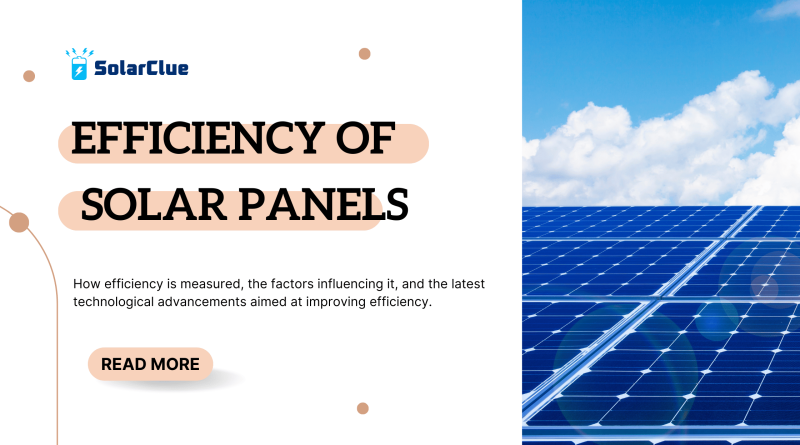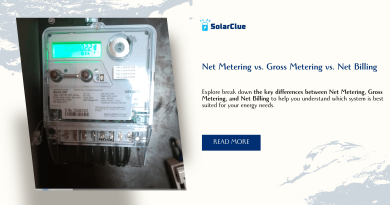What Is The Efficiency Of Solar Panels?
Solar panel efficiency is a critical factor in determining the energy output and overall effectiveness of solar power systems. This blog delves into how efficiency is measured, the factors influencing it, and the latest technological advancements aimed at improving efficiency.
Table of Contents
- 1 How Solar Panel Efficiency is Measured
- 1.1 Factors Influencing Solar Panel Efficiency
- 1.2 The Concept of Temperature Coefficient
- 1.3 Latest Advancements in Solar Panel Technology
- 1.4 Tips for Maximizing Solar Panel Efficiency
- 1.5 Calculating Solar Panel Energy Output Based on Efficiency
- 1.6 Comparing Efficiency of Different Solar Panel Types
- 1.7 The Impact of Shading and Soiling on Solar Panel Efficiency
- 1.8 The Future of Solar Panel Efficiency and Emerging Technologies
- 1.9 Conclusion
How Solar Panel Efficiency is Measured
Solar panel efficiency is the ratio of the electrical output of a solar panel to the incident energy in the form of sunlight. It is expressed as a percentage and calculated using the formula:

Factors Influencing Solar Panel Efficiency
Solar Cell Technology
The type of solar cell technology significantly impacts efficiency. Monocrystalline, polycrystalline, thin-film, and PERC are the primary technologies, each with different efficiency levels.
Temperature
Solar panels operate less efficiently at higher temperatures. The efficiency decreases as the temperature increases, which is quantified by the temperature coefficient.
Sunlight Intensity
The intensity and angle of sunlight affect the efficiency of solar panels. Panels perform optimally under direct sunlight at a perpendicular angle.
The Concept of Temperature Coefficient
The temperature coefficient indicates how much a solar panel’s efficiency decreases with a rise in temperature. It is expressed as a percentage per degree Celsius. For example, a temperature coefficient of -0.5%/°C means that for every degree above 25°C, the panel’s efficiency decreases by 0.5%.
Latest Advancements in Solar Panel Technology
Advancements in solar technology focus on improving efficiency through better materials, innovative designs, and enhanced manufacturing processes. Some notable advancements include:
- Bifacial Panels: Capture sunlight from both sides, increasing overall efficiency.
- Perovskite Solar Cells: Offer high efficiency and potential for lower production costs.
- PERC Technology: Enhances efficiency by improving light capture and reducing electron recombination.
Tips for Maximizing Solar Panel Efficiency
In Different Climates
- Hot Climates: Use panels with a low temperature coefficient and ensure proper ventilation to reduce heat buildup.
- Cold Climates: Opt for panels that perform well in low-light conditions and are resistant to snow accumulation.
Under Various Conditions
- Shading: Avoid installation in shaded areas and use microinverters or power optimizers to mitigate the impact of shading.
- Soiling: Regularly clean panels to remove dust, dirt, and debris that can block sunlight.
Calculating Solar Panel Energy Output Based on Efficiency

Comparing Efficiency of Different Solar Panel Types
| Solar Panel Type | Average Efficiency (%) | Advantages | Disadvantages |
|---|---|---|---|
| Monocrystalline | 15-20% | High efficiency, space-efficient | Higher cost |
| Polycrystalline | 13-16% | Lower cost, good efficiency | Less space-efficient |
| Thin-Film | 10-12% | Flexible, lightweight, lower cost | Lowest efficiency, larger area needed |
| PERC | 18-22% | High efficiency, good low-light performance | Slightly higher cost than traditional panels |
The Impact of Shading and Soiling on Solar Panel Efficiency
Shading: Even partial shading can significantly reduce a solar panel’s efficiency, as shaded cells produce less power and can affect the entire panel or array. Mitigation techniques include strategic placement, use of microinverters, and bypass diodes.
Soiling: Dirt, dust, and debris on the panel surface block sunlight and reduce efficiency. Regular cleaning and maintenance are essential to maintain optimal performance.
The Future of Solar Panel Efficiency and Emerging Technologies
Future advancements aim at increasing efficiency and reducing costs. Promising technologies include:
- Multi-Junction Solar Cells: Combine different materials to capture a broader spectrum of sunlight.
- Quantum Dot Solar Cells: Utilize nanoscale semiconductor particles to enhance light absorption.
- Transparent Solar Panels: Allow integration into windows and other surfaces, expanding application possibilities.
Conclusion
Understanding solar panel efficiency and the factors that influence it is crucial for maximizing energy output and making informed decisions when selecting and installing solar panels. With continuous advancements in technology, the efficiency and affordability of solar panels are expected to improve, making solar energy an even more attractive option for sustainable power.
FAQ Section
1. What affects solar panel efficiency the most?
The most significant factors include cell technology, temperature, and sunlight intensity.
2. How is solar panel efficiency calculated?
Efficiency is the ratio of electrical output to the incident solar energy, expressed as a percentage.
3. What is the temperature coefficient?
It indicates how much a solar panel’s efficiency decreases with a rise in temperature.
4. How can I maximize the efficiency of my solar panels?
Install panels in unshaded areas, keep them clean, and choose panels suitable for your climate.
5. What are the latest advancements in solar panel technology?
Advancements include bifacial panels, perovskite solar cells, and PERC technology.




